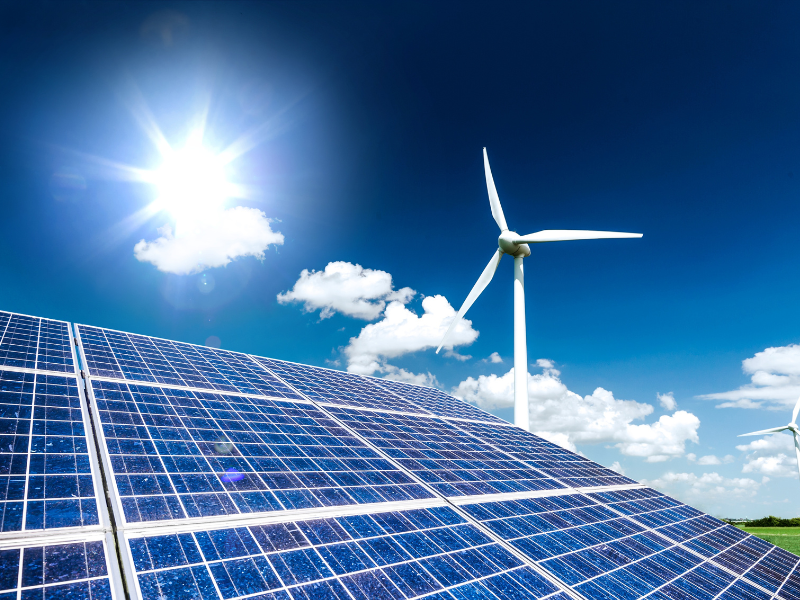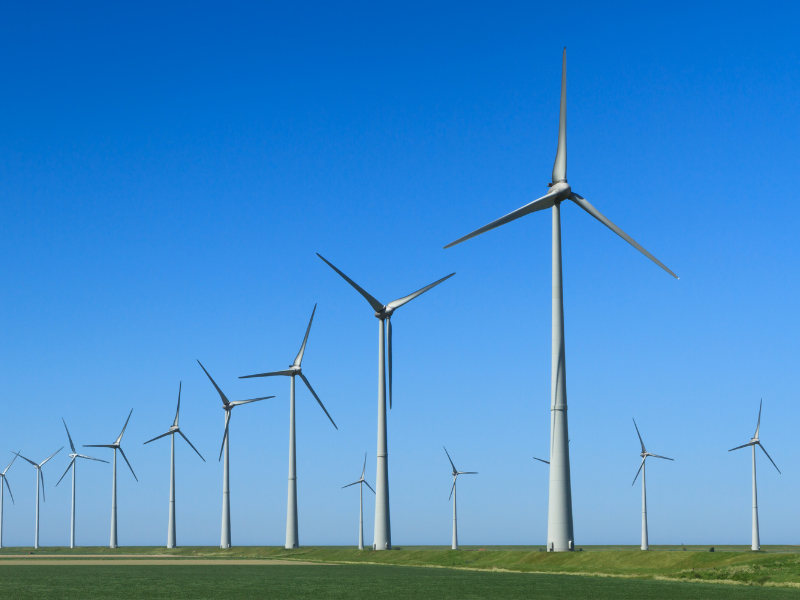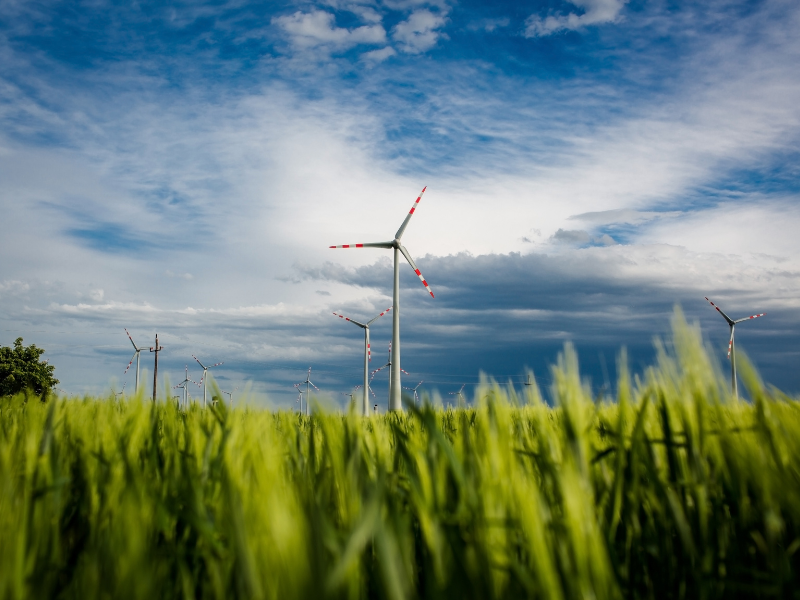Clean power and energy independence have become increasingly important topics in today’s world. With the growing concerns over climate change, environmental degradation, and geopolitical tensions, it is crucial for nations to reduce their dependence on fossil fuels and embrace sustainable energy sources. In this article, we will explore the benefits of clean power for energy independence and delve into the various aspects of this transition.
What is Clean Power?
Clean power refers to the generation of electricity using renewable energy sources that have a minimal carbon footprint. Unlike conventional power generation methods that rely on fossil fuels such as coal, oil, and natural gas, clean power harnesses the energy from natural resources such as the sun, wind, water, and geothermal heat.

The use of clean power is an essential strategy toward achieving energy independence and mitigating climate change. By transitioning to clean power sources, we reduce greenhouse gas emissions and minimize the negative ecological impacts associated with traditional energy production.
The Importance of Energy Independence
Energy independence is crucial for both nations and individuals alike. It is the ability to generate and consume energy without relying heavily on external sources. By achieving energy independence, countries can enhance their economic stability, national security, and environmental sustainability.
Relying on imported fossil fuels not only drains financial resources but also makes nations vulnerable to geopolitical tensions and price fluctuations. Additionally, the extraction, transportation, and combustion of fossil fuels contribute significantly to global carbon emissions, aggravating climate change and environmental degradation. Therefore, achieving energy independence through clean power sources is paramount.
Promoting Clean Power for Energy Independence

The transition to clean power sources is a multifaceted endeavor that requires the collaboration of governments, businesses, and individuals. Here are some key strategies for promoting clean power and achieving energy independence:
- Investing in Renewable Energy Infrastructure: Governments and private entities should invest in the development and deployment of clean power infrastructure. This includes the construction of solar farms, wind turbines, hydroelectric dams, and geothermal power plants.
- Encouraging Energy Efficiency: Promoting energy-efficient practices and technologies can significantly reduce energy consumption and the dependence on power from external sources. This involves adopting energy-efficient appliances, implementing building codes, and incentivizing sustainable lifestyle choices.
- Educating the Public: Raising awareness about the benefits of clean power and energy independence is crucial for fostering public support. Education programs, campaigns, and public forums can help dispel myths and misinformation surrounding clean energy and empower individuals to embrace sustainable practices.
- Supporting Research and Development: Governments, academic institutions, and private companies should invest in research and development to advance clean power technologies. This includes improving the efficiency of solar panels, enhancing wind turbine designs, and exploring innovative energy storage solutions.
- Creating Policy Incentives: Governments should implement policies that incentivize the adoption of clean power sources. This can include tax credits, subsidies, feed-in tariffs, and renewable portfolio standards to encourage businesses and individuals to invest in renewable energy systems.
Benefits of Clean Power for Energy Independence

Transitioning to clean power sources offers numerous benefits for achieving energy independence. Let’s explore some of the advantages:
Reducing Dependence on Fossil Fuels
One of the primary benefits of clean power is the reduction in dependence on finite fossil fuel resources. While fossil fuels are depleting rapidly, clean power sources are renewable and virtually inexhaustible. By relying on renewable energy, countries can mitigate their reliance on imports and reduce their vulnerability to fluctuating oil prices and geopolitical tensions.
Minimizing Environmental Impact
Clean power sources have a significantly lower impact on the environment compared to traditional fossil fuel-based power generation. Renewable energy technologies produce little to no greenhouse gas emissions, reducing the carbon footprint and mitigating climate change. Additionally, the use of clean power helps preserve ecosystems, reduces air and water pollution, and protects biodiversity.
Boosting Economic Growth
Investing in clean power infrastructure can stimulate economic growth and create employment opportunities. The renewable energy sector is rapidly expanding, offering job prospects in manufacturing, installation, maintenance, and research. Moreover, transitioning to clean power can reduce energy costs in the long run, benefiting businesses and households.
Enhancing National Security
Achieving energy independence through clean power sources enhances national security. By reducing reliance on imported fossil fuels, countries become less vulnerable to supply disruptions and geopolitical conflicts. Additionally, clean power systems are distributed, decentralized, and resilient, making them less susceptible to cyber-attacks or natural disasters.
Empowering Local Communities
Clean power promotes decentralization and empowers local communities to become energy self-sufficient. Installing rooftop solar panels, small wind turbines, or micro-hydropower systems allows individuals and communities to generate their own electricity. This not only reduces dependence on the grid but also fosters self-reliance, resilience, and community engagement.
Transitioning to Clean Power Sources

To achieve energy independence, countries must transition from fossil fuel-based power generation to clean power sources. Here are some of the most promising clean power technologies:
Solar Power
Solar power harnesses energy from the sun through photovoltaic (PV) panels or solar thermal systems. PV panels convert sunlight directly into electricity, while solar thermal systems generate heat for space heating or water heating. Solar power is abundant, renewable, and highly versatile, making it one of the fastest-growing clean power sources globally.
Wind Power
Wind power utilizes the kinetic energy of wind to generate electricity. Large wind turbines capture the wind’s energy and convert it into rotational motion, which drives a generator to produce electricity. Wind power is abundant, cost-effective, and emits no greenhouse gases or pollutants during operation. It is a prevalent clean power source, particularly in regions with high wind speeds.
Hydroelectric Power
Hydroelectric power harnesses the energy of flowing water to generate electricity. It involves constructing dams or diverting rivers to create reservoirs of water. The force of the water is then used to turn turbines and produce electricity. Hydroelectric power is a mature and reliable clean power source that can provide baseload power while being environmentally friendly.
Geothermal Power
Geothermal power taps into the heat stored beneath the Earth’s surface to generate electricity. It utilizes natural steam or hot water reservoirs to turn turbines and produce power. Geothermal power is sustainable, reliable, and emits minimal greenhouse gases. However, its implementation is dependent on suitable geothermal resources, limiting its widespread adoption.
Government Initiatives for Clean Power
Governments play a pivotal role in promoting clean power and achieving energy independence. Here are some common initiatives:
Incentives for Renewable Energy Investments
Many governments offer incentives to businesses and individuals who invest in renewable energy systems. These incentives can include tax breaks, grants, reduced permitting processes, and favorable financing options. By encouraging private investment in clean power, governments stimulate the growth of the renewable energy sector.
Tax Credits and Subsidies
Tax credits and subsidies are common tools used by governments to support clean power development. These financial incentives lower the costs associated with installing and operating clean power systems, making them more economically viable. Tax credits can offset a portion of the initial investment, while subsidies can provide ongoing financial support.
Research and Development Funding
Governments often allocate funds for research and development (R&D) in clean power technologies. These investments help drive innovation, improve efficiency, and reduce costs associated with clean power generation. R&D funding supports the development of new materials, advanced solar cells, wind turbine designs, and energy storage technologies.
Challenges in Achieving Energy Independence
While the benefits of clean power for energy independence are significant, several challenges need to be addressed:
Cost and Affordability
Clean power technologies, particularly solar and wind, have become increasingly cost-competitive in recent years. However, the initial investment and infrastructure costs can still be a barrier to adoption, especially for developing nations or low-income communities. Governments and financial institutions need to implement strategies that make clean power more accessible and affordable for all.
Infrastructure Limitations
Transitioning to clean power requires substantial infrastructure development. Integrating renewable energy systems into the existing grid, upgrading transmission lines, and ensuring a reliable power supply can be complex and expensive. Governments and utilities must invest in building the necessary infrastructure to accommodate clean power generation.
Technological Innovations
Technological advancements are crucial for improving the efficiency, reliability, and scalability of clean power technologies. Innovations in energy storage, grid integration, and power management systems are key to overcoming the intermittent nature of renewable energy sources and ensuring a stable electricity supply. Continued research and development are necessary to drive these innovations.
Political and Regulatory Obstacles
Political will and a supportive regulatory environment are essential for the successful transition to clean power. Governments need to enact policies that incentivize clean energy investments, streamline permitting processes, and establish clear targets for renewable energy generation. Political and regulatory stability is crucial for attracting private sector investment and fostering public confidence in clean power.
Successful Examples of Energy Independence
Several countries have made significant strides toward achieving energy independence through clean power sources. Here are a few notable examples:
Germany’s Energiewende
Germany’s Energiewende, meaning “energy transition,” is a comprehensive strategy to phase out nuclear power and fossil fuels in favor of renewable energy sources. The country has invested heavily in solar and wind technologies, implemented feed-in tariffs, and established a robust energy efficiency program. As a result, Germany has become a global leader in clean energy and has significantly reduced its carbon emissions.
Iceland’s Geothermal Revolution
Iceland derives more than 80% of its primary energy from geothermal and hydropower sources. The country’s abundant geothermal resources have allowed it to achieve near-total energy independence. Geothermal power provides heating and electricity to homes, businesses, and greenhouse operations, making Iceland a pioneer in sustainable energy solutions.
Costa Rica’s Commitment to Clean Energy
Costa Rica has made remarkable progress in clean energy generation, with renewable sources accounting for over 98% of its electricity production. The country’s commitment to hydropower, geothermal energy, wind power, and solar energy has transformed Costa Rica into one of the world’s greenest nations. Costa Rica’s electrification efforts have not only ensured energy independence but have also spurred economic growth and environmental conservation.
The Future of Energy Independence
The future of energy independence lies in continued advancements and innovation in clean power technologies. Here are some key areas to watch for:
Advancements in Energy Storage
Developing efficient and cost-effective energy storage systems is crucial for overcoming the intermittent nature of renewable energy sources. Advancements in battery technologies, such as lithium-ion batteries and flow batteries, will enable reliable energy storage and enable a smoother integration of clean power into existing grids.
Decentralized Energy Systems
Decentralized energy systems, such as microgrids and distributed generation, are gaining traction as a means to achieve energy independence. These systems empower communities and individuals to generate and manage their own energy, reducing reliance on centralized power plants and the grid. With advancements in smart grid technologies, decentralized energy systems will become more efficient and accessible.
Smart Grid Technologies
Smart grid technologies revolutionize the way we distribute and consume electricity. These systems utilize real-time data, automation, and demand response to optimize energy efficiency, reduce wastage, and enhance grid reliability. Smart grids enable better integration of renewable energy sources and facilitate energy independence by empowering consumers to actively participate in the energy market.
International Collaboration for Clean Power
Global cooperation is essential in realizing a sustainable, clean energy future. Collaborative efforts between nations, such as sharing best practices, research, and resources, can accelerate the transition to clean power globally. International agreements, like the Paris Agreement, promote renewable energy deployment and provide a framework for collective action in combating climate change.
Frequently Asked Questions (FAQs)
What is the definition of energy independence?
Energy independence refers to the ability of a nation or entity to produce and consume energy without relying heavily on external sources. It involves reducing dependence on imported fossil fuels and transitioning to sustainable and renewable energy sources.
How does clean power contribute to energy independence?
Clean power contributes to energy independence by reducing reliance on finite fossil fuel resources. Clean power sources, such as solar, wind, hydroelectric, and geothermal, are renewable and abundant, ensuring a sustainable and self-sufficient energy supply.
Are there any disadvantages to clean power sources?
While clean power sources offer numerous benefits, there are some limitations to consider. Intermittency is a challenge for solar and wind power, as they rely on weather conditions. Additionally, the initial investment and infrastructure costs associated with clean power can be high, although they become more cost-competitive over time.
How can individuals contribute to achieving energy independence?
Individuals can contribute to achieving energy independence by adopting energy-efficient practices, investing in rooftop solar panels, supporting clean energy policies, and advocating for sustainable lifestyle choices. Educating oneself about clean power and making conscious energy consumption decisions are vital steps toward a more energy-independent future.
Conclusion
Energy independence through clean power sources is a crucial goal for ensuring economic stability, national security, and environmental sustainability. The benefits of clean power, such as reducing dependence on fossil fuels, minimizing environmental impact, boosting economic growth, enhancing national security, and empowering local communities, make it an invaluable strategy for the future. By transitioning to renewable energy sources and fostering international collaboration, we can achieve a more sustainable and independent energy future for generations to come.

